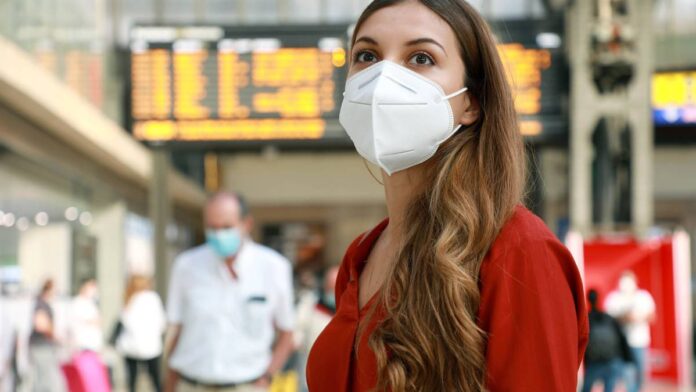For Kiwis, staying grounded simply isn’t an option. But how do you make your air travel greener? Photo / 123RF
When staying grounded simply isn’t an option, here’s how you can reduce the carbon footprint of your next flight. By Jessica Wynne Lockhart.
When planes were grounded in 2020, the planet breathed a sigh of relief. Emissions from aviation were reduced by up to 60 per cent, according to the Global Carbon Project. But now, tourists are boarding planes with new fervour. Just last week, I saw this tweet, which had been shared more than 50,000 times:
“Arrived in Rome this morning on a €19 return flight just sitting at the Colosseum having lasagne and a beer and flying home tonight back to my own bed. What a thrill. Absolutely buzzing for life and all these cheap day trips,” tweeted @kinsella_kerri.
While its intention was to convey the sheer joie de vivre that accompanies post-pandemic travel, it rightfully generated backlash. A cheap thrill trip from London to Italy may only cost about $30 — but it also generates 273.8kg of carbon dioxide emissions.
It’s no secret that transportation is one of the most significant contributors to global greenhouse gas emissions. What may come as a surprise, however, is how much of that is generated by tourism alone. According to the United Nations World Tourism Organisation (UNWTO), transport-related emissions from tourism are responsible for more than five per cent of all man-made emissions globally.
Kilometre-by-kilometre and hour-by-hour, air travel is likely the most carbon-intensive activity you’ll undertake this year. But for most Kiwis, giving up flying simply isn’t an option. Sure, Swedes can enthusiastically flygskam (flight shame) one another, but they don’t live on islands thousands of kilometres away from the rest of the world. Flying is the only way to connect with our friends and family abroad.
Enter electric planes. Sounds Airway plans to offer regional flights in 20-seat, electric ES-19 passenger aircraft by 2026. Air New Zealand — which has set a goal to have net-zero carbon emissions by 2050 — also intends to buy electric aircraft and is investing in the development of sustainable aviation fuel.
However, much of this technology is still in development. And even once available, electric planes will be limited to short ranges.
“We can’t bank on aviation technologies that are only promises at this stage,” says James Higham, a professor at the University of Otago, whose research specialises in tourism carbon emissions. “The problem is we don’t have a lot of time—and aviation technologies tend to take a long time to come to market.”
Higham believes that policy change at the federal or global level is critical to reduce global carbon emissions by 2030. But until that happens, individual travellers can’t be complacent about the carbon footprint of their travel.
“I’m not suggesting people don’t fly — what I’m suggesting is that we have to change the way we fly,” says Higham.
That means being more mindful about when and how we travel. Spending more time in a destination and using ground or public transport to get there can reduce your footprint significantly. For example, while a medium-size petrol car produces about 192g of CO2 for every kilometre travelled, a bus releases as little as 28g.
If you do have to fly, opt for economy. Being crammed in like a sardine does have a benefit; it’s a more efficient use of cabin space, cutting emissions in half. Direct flights also win out since planes use more fuel on take-off than while cruising. Finally, research your airline of choice. (The Atmosfair Airline Index, which ranks airlines based on their carbon efficiency, is a solid resource.) Some are doing a better job than others to reduce emissions, including through funding carbon offsetting projects. Many airlines also offer the option to purchase additional carbon offset credits. This allows you to essentially donate to a project that reduces emissions, such as tree planting.
But even when strictly monitored, critics say offset programmes can be ineffective. In California, for example, wildfires have depleted nearly all the carbon credits set aside by forestry projects in the US to protect against the risk of trees being damaged over the next century and, in the process, between 5.7 million and 6.8m tonnes of carbon have been released into the atmosphere since 2015.
“Once CO2 hits the atmosphere, it stays there for thousands of years. Supporting a forest isn’t going to cycle that stuff out of the atmosphere fast enough,” says Christine Beckmann, co-founder of Tomorrow’s Air, a subscription-based platform that uses direct air capture to remove carbon dioxide from the atmosphere and store it permanently underground.
“Climate activism is incomplete without removal,” says Beckmann, adding that nature-based solutions (such as tree planting) work in unity with tech-based solutions (such as permanent carbon removal). In other words, it pays to both offset your flight and fund permanent carbon storage solutions.
Ultimately, the best thing you can do is plan your trips with intentionality. After all, you don’t have to go all the way to Rome to get a beer and lasagne.
Do you have a sustainable travel question you’d like Jessica to answer? Email us at travel@nzherald.co.nz with “The Ethical Traveller” in the subject line










